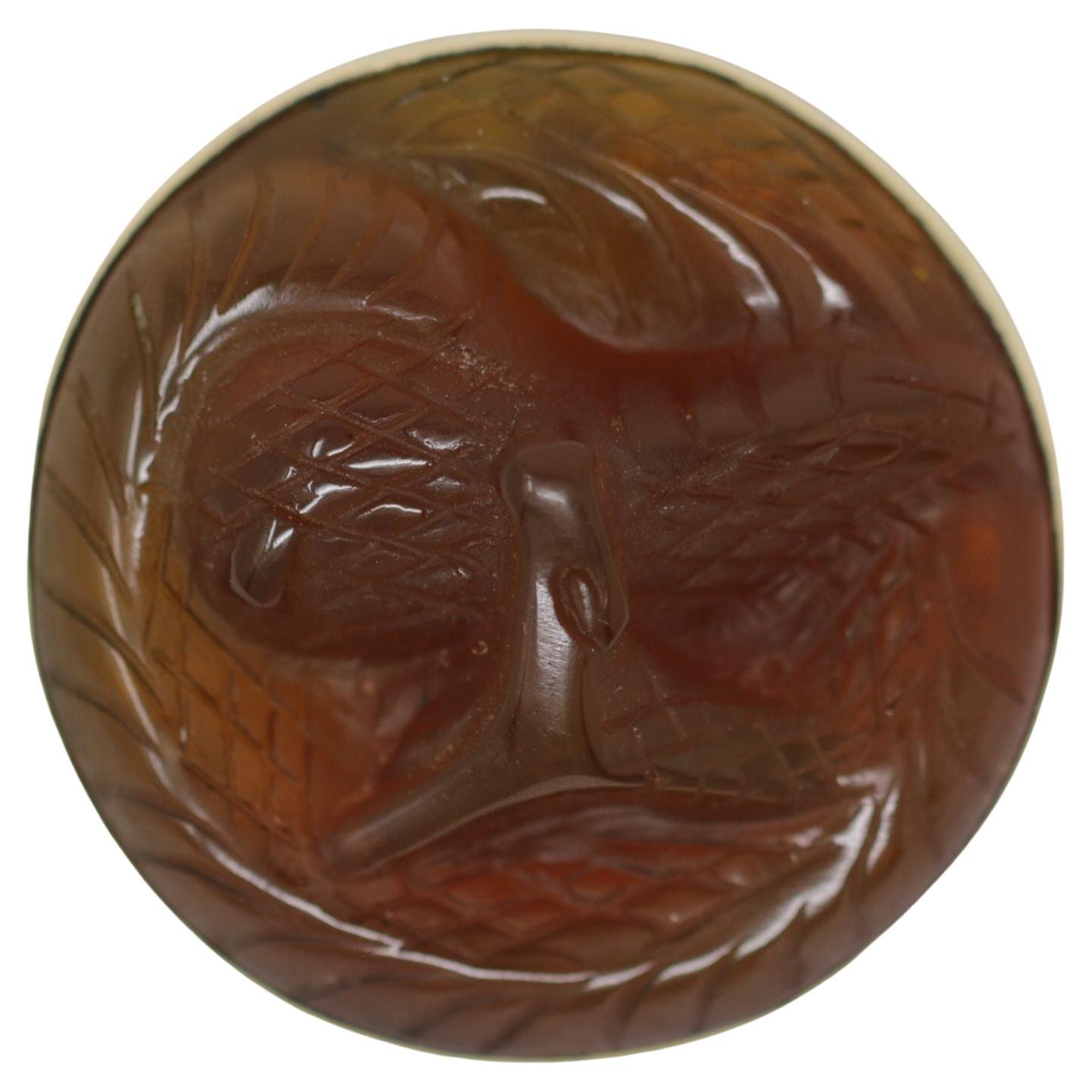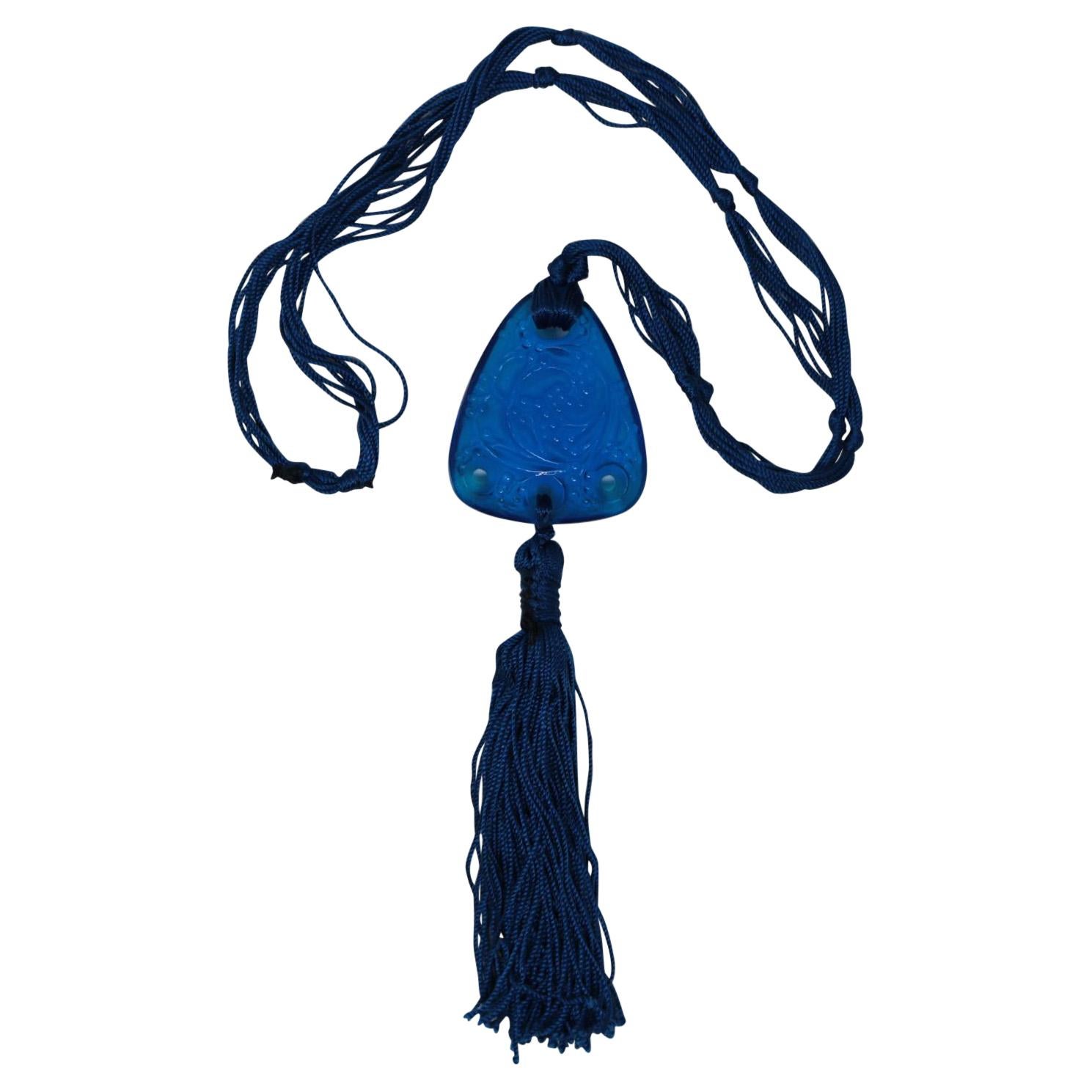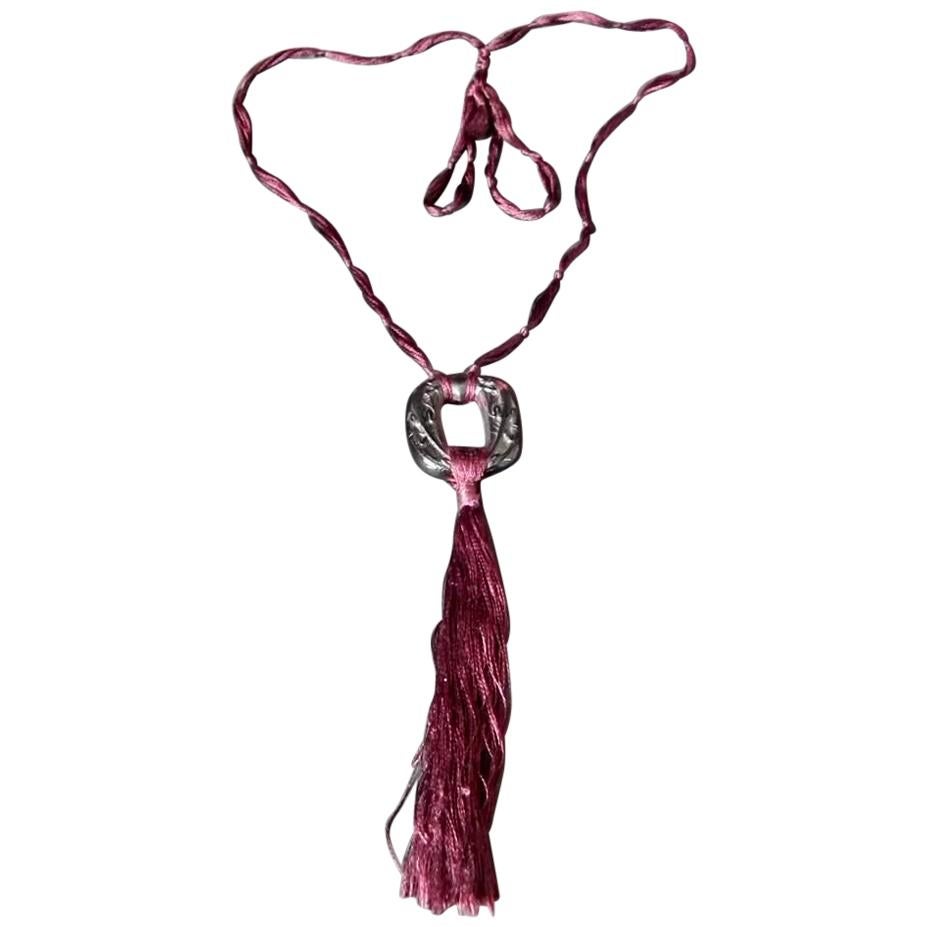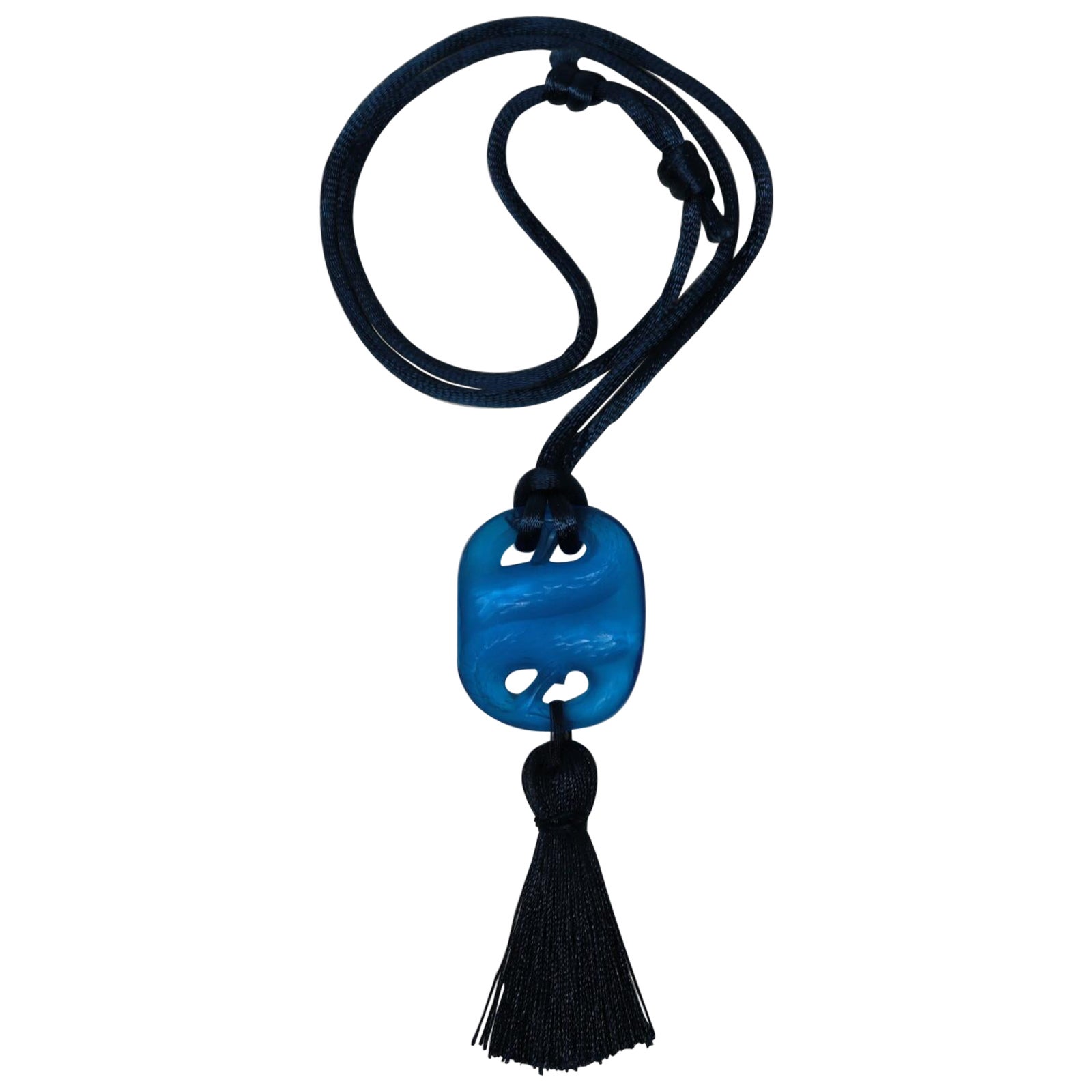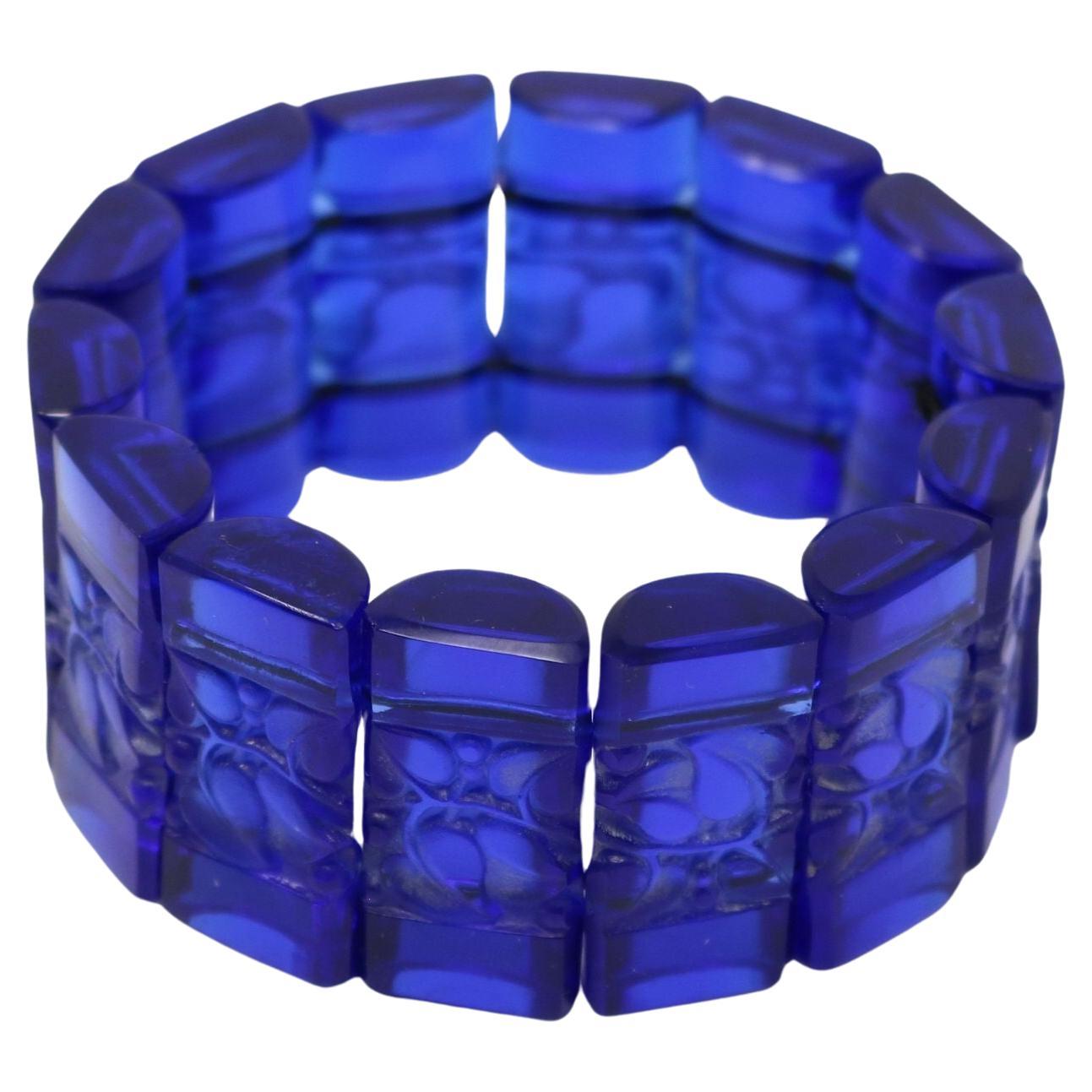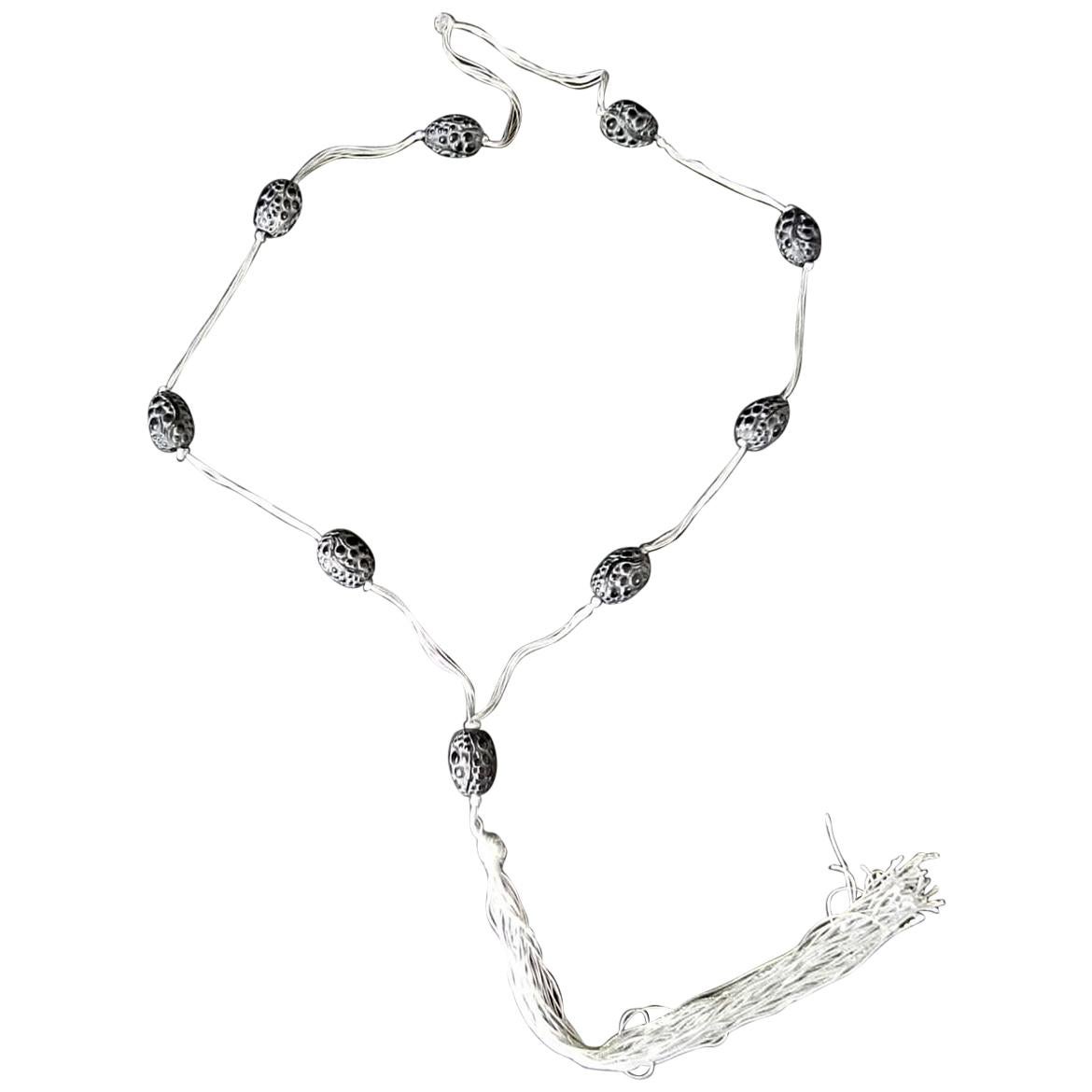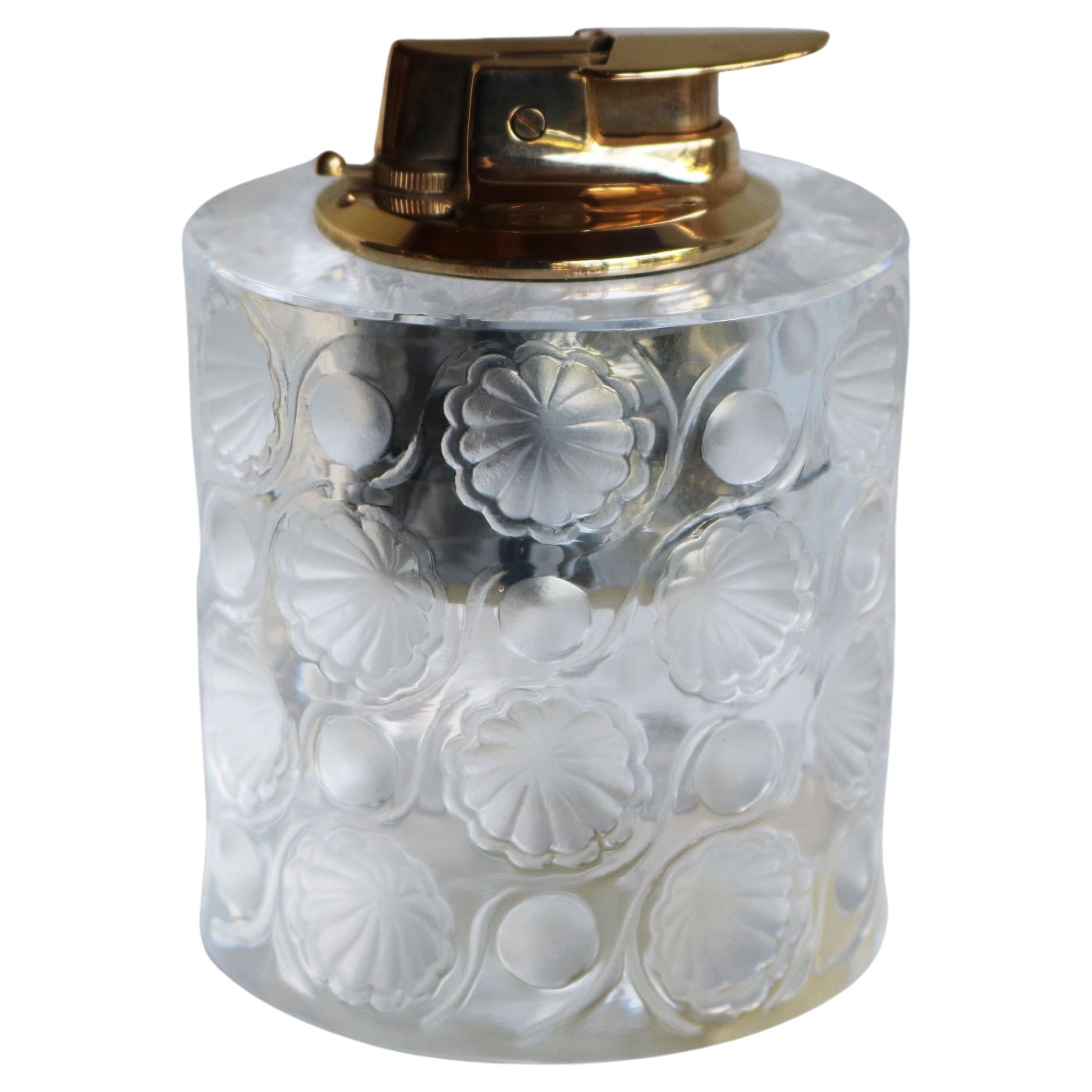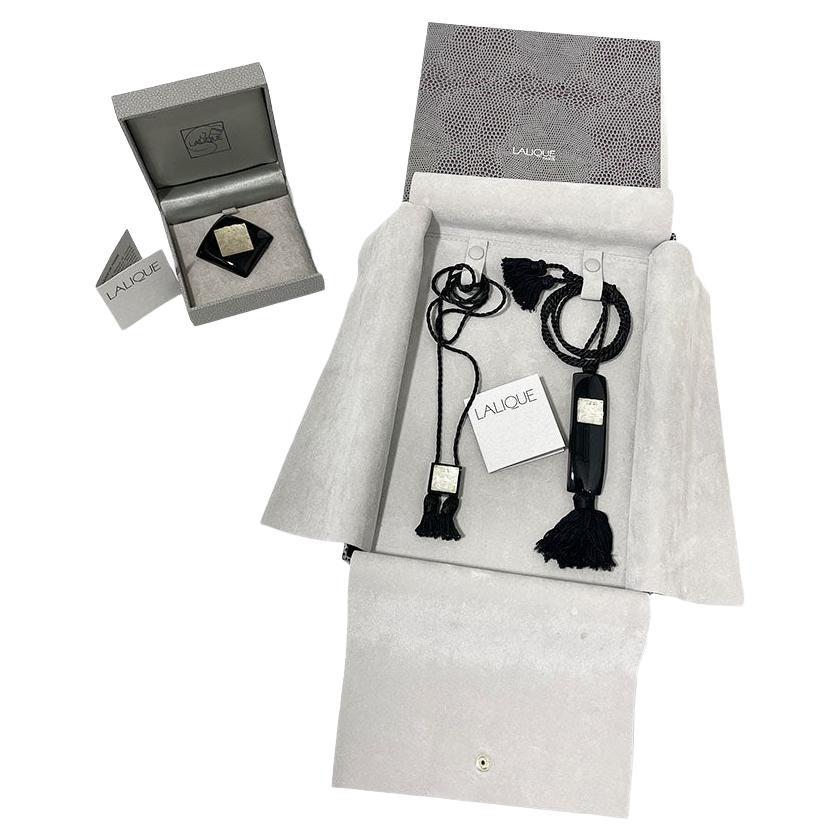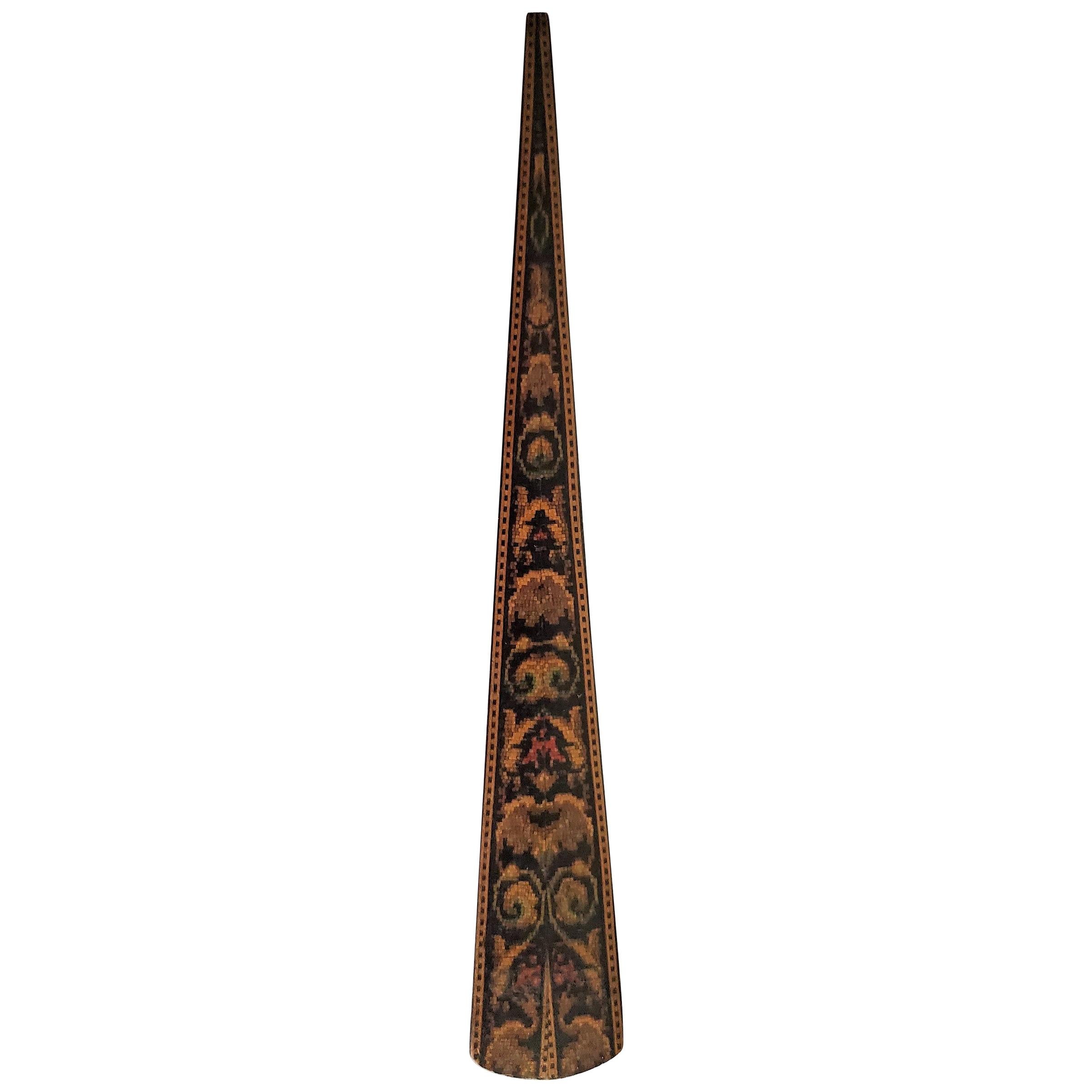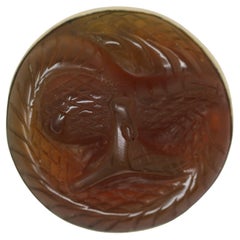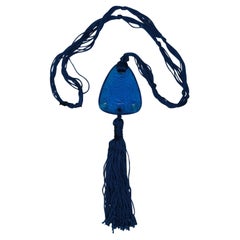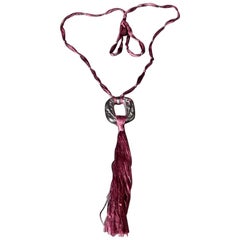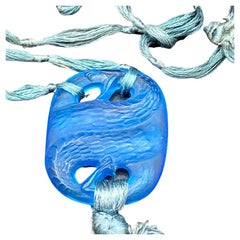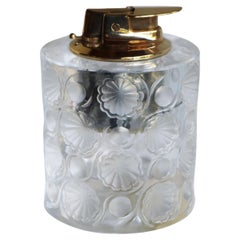
Rene Lalique Barrette Oiseaux Hair Clip or Brooch
View Similar Items
Rene Lalique Barrette Oiseaux Hair Clip or Brooch
About the Item
- Creator:René Lalique (Maker)
- Dimensions:Height: 0.4 in (1.02 cm)Width: 2.8 in (7.12 cm)Depth: 0.4 in (1.02 cm)
- Style:Art Nouveau (Of the Period)
- Materials and Techniques:Glass,Pressed
- Place of Origin:
- Period:
- Date of Manufacture:1912
- Condition:Wear consistent with age and use. Very good. Surface mold line to the glass. Pin and clasp in good working order.
- Seller Location:Chelmsford, GB
- Reference Number:Seller: 226611stDibs: LU4246123784452
René Lalique
The career of the famed jewelry designer, glassmaker and decorative artist René Lalique spanned decades and artistic styles. Best known today for his works in glass, Lalique first won recognition for his jewelry. He was described as the inventor of modern jewelry by the French artist and designer Émile Gallé, and his luxurious naturalistic designs helped define the Art Nouveau movement. Later as a glassmaker in the 1920s and ‘30s, Lalique designed vases, clocks, chandeliers and even car hood ornaments that were the essence of Art Deco chic. Even now, the name Lalique continues to be a byword for a graceful, gracious and distinctively French brand of sophistication.
Born in 1860 in the Marne region of France, Lalique began his career as a jewelry designer in the last decades of the 19th century. His work employed now-classic Art Nouveau themes and motifs: flowing, organic lines; forms based on animals, insects and flowers — all rendered in luxurious materials such as ivory, enamel, gold and semi-precious stones. By 1905, Lalique had begun creating works in glass, and his style began to shift to a cleaner, sharper, smoother, more modern approach suited to his new medium. His Paris shop’s proximity to perfumer François Coty’s led him to experiment with beautiful perfume bottles. He offered the first customized scent bottles, transforming the perfume industry. By the end of the First World War, the artist had fully embraced Art Deco modernity, devoting himself to new industrial techniques of glass production and designs that manifest the sweeping lines and the forms suggestive of speed and movement characteristic of the style. Lalique’s work looked both backward and forward in time: embracing ancient mythological themes even as it celebrated modern progress.
Late in his career, Lalique took on high profile luxury interior design projects in Paris, Tokyo and elsewhere. He designed decorative fixtures and lighting for the interior of the luxury liner Normandie in 1935, and decorated the salons of well-known fashion designer Madeleine Vionnet. Today, Lalique’s influence is as relevant as it was when he opened his first jewelry shop in 1890. In a modern or even a traditional décor, as you will see from the objects offered on these pages, the work of René Lalique provides the stamp of savoir-faire.
- Rene Lalique Amber Glass 'Serpent' BroochBy René LaliqueLocated in Chelmsford, EssexRene Lalique amber glass 'Serpent' brooch, inset into a brass mount. Features a coiled snake. The brass mount has a stamped makers mark, 'LALIQUE FRANCE'...Category
Vintage 1910s European Art Deco Collectible Jewelry
MaterialsGlass
- Rene Lalique Electric Blue Coloured Glass 'Graines' PendantBy René LaliqueLocated in Chelmsford, EssexRene Lalique electric blue coloured glass 'Graines' Pendant. This pattern features a branch with berries. Threaded tassles and necklace. Engraved makers mark, 'Lalique'. Book referen...Category
Vintage 1920s French Art Nouveau Collectible Jewelry
MaterialsGlass
- Rene Lalique Plum Glass 'Lezards' PendantBy René LaliqueLocated in Chelmsford, EssexRene Lalique purple coloured Glass 'Lezards' pendant. This design features lizards. Engraved makers mark, 'Lalique'. Book reference: Marcilhac 1648.Category
Vintage 1920s French Art Deco Collectible Jewelry
MaterialsGlass
- Rene Lalique Blue Glass Serpents PendantBy René LaliqueLocated in Chelmsford, EssexRene Lalique Electric blue Glass 'Serpents' pendant. This pattern features two open mouthed snakes, their heads forming the holes for the cord and tassle attachments. Necklace is a n...Category
Vintage 1920s Collectible Jewelry
MaterialsGlass
- Rene Lalique Blue Glass 'Ceriser' BraceletBy René LaliqueLocated in Chelmsford, EssexRene Lalique blue glass 'Ceriser' Bracelet. The bracelet consists of 14 rectangular, cylinder-half shaped tablets, strung together with elastic. Cer...Category
Vintage 1920s Art Deco Collectible Jewelry
MaterialsGlass
- Rene Lalique Black Glass 'Grosses Graines' NecklaceBy René LaliqueLocated in Chelmsford, EssexRene Lalique black glass 'Grosses Graines' necklace. 9 beads. Book reference: Marcilhac 1500.Category
Vintage 1920s French Art Deco Collectible Jewelry
MaterialsGlass
- Vintage Native American Southwestern Navajo Beaded Hair Clip Bow Barrette 5"Located in Dayton, OHVintage Native American / Navajo seed bead hair clip / bow / barrette featuring a colorful floral theme with white, red, yellow, green, and blue. Purchased in the 1960s-1970s at Gil...Category
Mid-20th Century Native American Collectible Jewelry
MaterialsLeather, Beads
- Rene Lalique Art Deco Snake PendantBy René LaliqueLocated in SAINT-OUEN-SUR-SEINE, FRRene lalique was a word famous jeweler before becoming a successful glass designer. He was a man of the Art Nouveau style and his creations were celebrated by French artists as Sarah bernard...Category
Vintage 1920s French Art Deco Collectible Jewelry
MaterialsGlass
- French Signed Lalique Crystal Tokyo Table Lighter with Frosted Floral MedallionsBy René LaliqueLocated in Ijzendijke, NLWhen it comes to defining elegance and affluence as a lifestyle, Lalique crystal comes to mind for most people. From its earliest days to present times, the Lalique Company has consi...Category
Vintage 1930s French Art Deco Tobacco Accessories
MaterialsCrystal, Brass
- Lalique "Arethuse" Masque De Femme Art Deco Black & Clear Crystal SetBy René LaliqueLocated in Delft, NLLalique "Arethuse" Masque De Femme Art Deco Black & Clear Crystal set A set of 2 black resin pendants and a brooch with clear crystal on black resin and the pendants with twisted ...Category
20th Century French Collectible Jewelry
MaterialsCrystal
- Antique Snowshoe Brooch Or Pin. Wintersport.Located in Oxfordshire, GBSnowshoe Brooch Or Pin. A very nice piece of antique winter themed jewellery, a broach in the form of a snowshoe with two gentlemen. The surround is in the form of a leather strand w...Category
Early 20th Century Scandinavian Sporting Art Sports Equipment and Memora...
MaterialsSilver
- Rare 19th Century English Tunbridgeware Hair Pin or SlideLocated in Dallas, TXPresenting an absolutely gorgeous and extremely unique and rare 19th century British Tunbridgeware hair pin/bobbin or slide. This slide is unlike any of it’s kind we have seen before…. it is a very rare survivor ! From circa 1860–1880. Made of walnut with gorgeous marquetry inlay on the entirety of the front with classic Tunbridgeware micro-mosaic all over the front. The rear is walnut. The marquetry inlay appears to be various different woods, namely, maple, walnut and satinwood. Would have been worn in a Lady’s hair bun with the micro-mosaic facing forward. This would have belonged to a very elegant lady in the mid to late 19th century. Tunbridge ware is a form of decoratively inlaid woodwork, typically in the form of boxes, that is characteristic of Tonbridge and the spa town of Royal Tunbridge Wells in Kent in the 18th and 19th centuries. The decoration typically consists of a mosaic of many very small pieces of different coloured woods that form a pictorial vignette. Shaped rods and slivers of wood were first carefully glued together, then cut into many thin slices of identical pictorial veneer with a fine saw. Elaborately striped and feathered bandings for framing were pre-formed in a similar fashion. There is a collection of Tunbridge ware in the Tunbridge Wells Museum and Art Gallery in Tunbridge Wells. The famous makers of Tunbridge ware were in the Tunbridge Wells area of Kent; their most notable work was from circa 1830-1900. Early makers of Tunbridge ware, in Tunbridge Wells in the mid-18th century, were the Burrows family, and Fenner and Co. In the 19th century, around 1830, James Burrows invented a technique of creating mosaics from wooden tesserae. Henry Hollamby, apprenticed to the Burrows family, set up on his own in 1842 and became an important manufacturer of Tunbridge ware, employing about 40 people. Edmund Nye (1797–1863) and his father took over the Fenner company when William Fenner retired in 1840, after 30 years in partnership with him. Thomas Barton (1819–1903), previously apprenticed at the Wise factory, joined the Nyes in 1836, and worked as Nye’s designer; he took over the business in 1863 and continued there until his death. In Tonbridge (near to Tunbridge Wells), George Wise (1703–1779) is known to have had a business in 1746. It continued with his son Thomas, and Thomas’s nephew George (1779–1869), who took over in 1806. In its early years the company made articles such as workboxes and tea caddies with prints of popular views; later items had pictures created from mosaics. Their workshop in Tonbridge, Wise’s Tunbridge Ware Manufactory, was next to the Big Bridge over the Medway; the building was demolished in 1886 to widen the approach to the bridge. Tunbridge ware became popular with visitors to the spa town of Tunbridge Wells, who bought them as souvenirs and gifts. Articles included cribbage boards, paperweights, writing slopes, snuffboxes and glove boxes. At the Great Exhibition of 1851, Tunbridge ware by Edmund Nye, Robert Russell and Henry Hollamby was shown; Edmund Nye received a commendation from the judges for his work. He exhibited a table depicting a mosaic of a ship at sea; 110,800 tesserae were used in making the picture. The manufacturers of Tunbridge ware were cottage industries, and they were no more than nine in Tunbridge Wells and one in Tonbridge. The number declined in the 1880s; competent craftsmen were hard to find, and public tastes changed. After the death of Thomas Barton in 1903 the only surviving firm was Boyce, Brown and Kemp, which closed in 1927. Marquetry was an old technique which was continued by Nye and Barton to create images such as birds or butterflies. ‘Green Oak’ as caused by the fungus Chlorociboria aeruginascens. Stickware and half-square mosaic was invented by James Burrows in about 1830: a bunch of wooden sticks of different colours, each having triangular or diamond-shaped cross section, were tightly glued together; in the case of stickware, the resulting block was dried, then turned to form an article such as the base of a pincushion. For half-square mosaic, thin slices were taken from the composite block, and applied to a surface.[1][2][4] Tesselated mosaic, was a development by James Burrows of half-square mosaic; it was adopted by George Wise and Edmund Nye. Minute tesserae were used to form a wide variety of geometric and pictorial designs. Many sorts of wood were used for the various colours; about 40 were in regular use. Only natural colors were used; green was provided by “green oak”, produced by the action of fungus on fallen oak. Designs for articles were often taken from designs of Berlin wool work.Category
Antique Late 19th Century English High Victorian Collectible Jewelry
MaterialsSatinwood, Walnut
